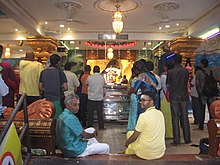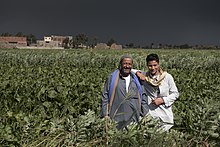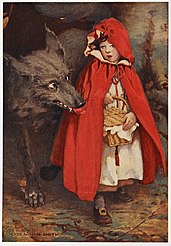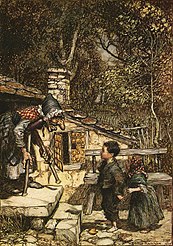Folklore theme by Ali4Chris
Download: Folklore.p3t

(3 backgrounds)
Folklore is the body of expressive culture shared by a particular group of people, culture or subculture.[1] This includes oral traditions such as tales, myths, legends,[a] proverbs, poems, jokes, and other oral traditions.[3][4] This also includes material culture, such as traditional building styles common to the group. Folklore also encompasses customary lore, taking actions for folk beliefs, and the forms and rituals of celebrations such as Christmas, weddings, folk dances, and initiation rites.[3]
Each one of these, either singly or in combination, is considered a folklore artifact or traditional cultural expression. Just as essential as the form, folklore also encompasses the transmission of these artifacts from one region to another or from one generation to the next. Folklore is not something one can typically gain from a formal school curriculum or study in the fine arts. Instead, these traditions are passed along informally from one individual to another, either through verbal instruction or demonstration.[5]
The academic study of folklore is called folklore studies or folkloristics, and it can be explored at the undergraduate, graduate, and Ph.D. levels.[6]
Overview[edit]



The word folklore, a compound of folk and lore, was coined in 1846 by the Englishman William Thoms,[7] who contrived the term as a replacement for the contemporary terminology of "popular antiquities" or "popular literature". The second half of the word, lore, comes from Old English lār 'instruction'. It is the knowledge and traditions of a particular group, frequently passed along by word of mouth.[8][9]
The concept of folk has varied over time. When Thoms first created this term, folk applied only to rural, frequently poor and illiterate peasants. A more modern definition of folk is a social group that includes two or more people with common traits who express their shared identity through distinctive traditions. "Folk is a flexible concept which can refer to a nation as in American folklore or to a single family."[10] This expanded social definition of folk supports a broader view of the material, i.e., the lore, considered to be folklore artifacts. These now include all "things people make with words (verbal lore), things they make with their hands (material lore), and things they make with their actions (customary lore)".[11] Folklore is no longer considered to be limited to that which is old or obsolete. These folk artifacts continue to be passed along informally, as a rule anonymously, and always in multiple variants. The folk group is not individualistic; it is community-based and nurtures its lore in community. "As new groups emerge, new folklore is created… surfers, motorcyclists, computer programmers".[12] In direct contrast to high culture, where any single work of a named artist is protected by copyright law, folklore is a function of shared identity within a common social group.[13]
Having identified folk artifacts, the professional folklorist strives to understand the significance of these beliefs, customs, and objects for the group, since these cultural units[14] would not be passed along unless they had some continued relevance within the group. That meaning can, however, shift and morph; for example, the Halloween celebration of the 21st century is not the All Hallows' Eve of the Middle Ages and even gives rise to its own set of urban legends independent of the historical celebration; the cleansing rituals of Orthodox Judaism were originally good public health in a land with little water, but now these customs signify for some people identification as an Orthodox Jew. By comparison, a common action such as tooth brushing, which is also transmitted within a group, remains a practical hygiene and health issue and does not rise to the level of a group-defining tradition.[15] Tradition is initially remembered behavior; once it loses its practical purpose, there is no reason for further transmission unless it has been imbued with meaning beyond the initial practicality of the action. This meaning is at the core of folkloristics, the study of folklore.[16]
With the increasing theoretical sophistication of the social sciences, it has become evident that folklore is a naturally occurring and necessary component of any social group; it is indeed all around us.[17] Folklore does not have to be old or antiquated; it continues to be created and transmitted, and in any group, it is used to differentiate between "us" and "them".
Origin and development of folklore studies[edit]
Folklore began to distinguish itself as an autonomous discipline during the period of romantic nationalism, in Europe. A particular figure in this development was Johann Gottfried von Herder, whose writings in the 1770s presented oral traditions as organic processes grounded in locale. After the German states were invaded by Napoleonic France, Herder's approach was adopted by many of his fellow Germans, who systematized the recorded folk traditions, and used them in their process of nation building. This process was enthusiastically embraced by smaller nations, like Finland, Estonia, and Hungary, which were seeking political independence from their dominant neighbors.[18]
Folklore, as a field of study, further developed among 19th century European scholars, who were contrasting tradition with the newly developing modernity. Its focus was the oral folklore of the rural peasant populations, which were considered as residue and survivals of the past that continued to exist within the lower strata of society.[19] The "Kinder- und Hausmärchen" of the Brothers Grimm (first published 1812) is the best known but by no means only collection of verbal folklore of the European peasantry of that time. This interest in stories, sayings and songs continued throughout the 19th century and aligned the fledgling discipline of folkloristics with literature and mythology. By the turn into the 20th century the number and sophistication of folklore studies and folklorists had grown both in Europe and North America. Whereas European folklorists remained focused on the oral folklore of the homogenous peasant populations in their regions, the American folklorists, led by Franz Boas and Ruth Benedict, chose to consider Native American cultures in their research, and included the totality of their customs and beliefs as folklore. This distinction aligned American folkloristics with cultural anthropology and ethnology, using the same techniques of data collection in their field research. This divided alliance of folkloristics between the humanities in Europe and the social sciences in America offers a wealth of theoretical vantage points and research tools to the field of folkloristics as a whole, even as it continues to be a point of discussion within the field itself.[20]
The term folkloristics, along with the alternative name folklore studies,[b] became widely used in the 1950s to distinguish the academic study of traditional culture from the folklore artifacts themselves. When the American Folklife Preservation Act (Public Law 94-201) was passed by the U.S. Congress in January 1976,[21] to coincide with the Bicentennial Celebration, folkloristics in the United States came of age.
"…[Folklife] means the traditional expressive culture shared within the various groups in the United States: familial, ethnic, occupational, religious, regional; expressive culture includes a wide range of creative and symbolic forms such as custom, belief, technical skill, language, literature, art, architecture, music, play, dance, drama, ritual, pageantry, handicraft; these expressions are mainly learned orally, by imitation, or in performance, and are generally maintained without benefit of formal instruction or institutional direction."
Added to the extensive array of other legislation designed to protect the natural and cultural heritage of the United States, this law also marks a shift in national awareness. It gives voice to a growing understanding that cultural diversity is a national strength and a resource worthy of protection. Paradoxically, it is a unifying feature, not something that separates the citizens of a country. "We no longer view cultural difference as a problem to be solved, but as a tremendous opportunity. In the diversity of American folklife we find a marketplace teeming with the exchange of traditional forms and cultural ideas, a rich resource for Americans".[22] This diversity is celebrated annually at the Smithsonian Folklife Festival and many other folklife fests around the country.
There are numerous other definitions. According to William Bascom major article on the topic there are "four functions to folklore":[23]
- Folklore lets people escape from repressions imposed upon them by society.
- Folklore validates culture, justifying its rituals and institutions to those who perform and observe them.
- Folklore is a pedagogic device which reinforces morals and values and builds wit.
- Folklore is a means of applying social pressure and exercising social control.
Definition of "folk"[edit]


The folk of the 19th century, the social group identified in the original term "folklore", was characterized by being rural, illiterate and poor. They were the peasants living in the countryside, in contrast to the urban populace of the cities. Only toward the end of the century did the urban proletariat (on the coattails of Marxist theory) become included with the rural poor as folk. The common feature in this expanded definition of folk was their identification as the underclass of society.[24]
Moving forward into the 20th century, in tandem with new thinking in the social sciences, folklorists also revised and expanded their concept of the folk group. By the 1960s it was understood that social groups, i.e. folk groups, were all around us; each individual is enmeshed in a multitude of differing identities and their concomitant social groups. The first group that each of us is born into is the family, and each family has its own unique family folklore. As a child grows into an individual, its identities also increase to include age, language, ethnicity, occupation, etc. Each of these cohorts has its own folklore, and as one folklorist points out, this is "not idle speculation… Decades of fieldwork have demonstrated conclusively that these groups do have their own folklore."[12] In this modern understanding, folklore is a function of shared identity within any social group.[13]
This folklore can include jokes, sayings and expected behavior in multiple variants, always transmitted in an informal manner. For the most part it will be learned by observation, imitation, repetition or correction by other group members. This informal knowledge is used to confirm and re-inforce the identity of the group. It can be used both internally within the group to express their common identity, for example in an initiation ceremony for new members. Or it can be used externally to differentiate the group from outsiders, like a folkdance demonstration at a community festival. Significant to folklorists here is that there are two opposing but equally valid ways to use this in the study of a group: you can start with an identified group in order to explore its folklore, or you can identify folklore items and use them to identify the social group.[25]
Beginning in the 1960s, a further expansion of the concept of folk began to unfold through the study of folklore. Individual researchers identified folk groups that had previously been overlooked and ignored. One notable example of this is found in an issue of the Journal of American Folklore, published in 1975, which is dedicated exclusively to articles on women's folklore, with approaches that had not come from a man's perspective.[c] Other groups that were highlighted as part of this broadened understanding of the folk group were non-traditional families, occupational groups, and families that pursued the production of folk items over multiple generations.
Folklorist Richard Dorson explained in 1976 that the study of folklore is "concerned with the study of traditional culture, or the unofficial culture" that is the folk culture, "as opposed to the elite culture, not for the sake of proving a thesis but to learn about the mass of [humanity] overlooked by the conventional disciplines".[26]
Folklore genres[edit]

Individual folklore artifacts are commonly classified as one of three types: material, verbal or customary lore. For the most part self-explanatory, these categories include physical objects (material folklore), common sayings, expressions, stories and songs (verbal folklore), and beliefs and ways of doing things (customary folklore). There is also a fourth major subgenre defined for children's folklore and games (childlore), as the collection and interpretation of this fertile topic is particular to school yards and neighborhood streets.[27] Each of these genres and their subtypes is intended to organize and categorize the folklore artifacts; they provide common vocabulary and consistent labeling for folklorists to communicate with each other.
That said, each artifact is unique; in fact one of the characteristics of all folklore artifacts is their variation within genres and types.[28] This is in direct contrast to manufactured goods, where the goal in production is to create identical products and any variations are considered mistakes. It is however just this required variation that makes identification and classification of the defining features a challenge. And while this classification is essential for the subject area of folkloristics, it remains just labeling, and adds little to an understanding of the traditional development and meaning of the artifacts themselves.[29]
Necessary as they are, genre classifications are misleading in their oversimplification of the subject area. Folklore artifacts are never self-contained, they do not stand in isolation but are particulars in the self-representation of a community. Different genres are frequently combined with each other to mark an event.[30] So a birthday celebration might include a song or formulaic way of greeting the birthday child (verbal), presentation of a cake and wrapped presents (material), as well as customs to honor the individual, such as sitting at the head of the table, and blowing out the candles with a wish. There might also be special games played at birthday parties which are not generally played at other times. Adding to the complexity of the interpretation, the birthday party for a seven-year-old will not be identical to the birthday party for that same child as a six-year-old, even though they follow the same model. For each artifact embodies a single variant of a performance in a given time and space. The task of the folklorist becomes to identify within this surfeit of variables the constants and the expressed meaning that shimmer through all variations: honoring of the individual within the circle of family and friends, gifting to express their value and worth to the group, and of course, the festival food and drink as signifiers of the event.
Verbal tradition[edit]

The formal definition of verbal lore is words, both written and oral, that are "spoken, sung, voiced forms of traditional utterance that show repetitive patterns."[31] Crucial here are the repetitive patterns. Verbal lore is not just any conversation, but words and phrases conforming to a traditional configuration recognized by both the speaker and the audience. For narrative types by definition have consistent structure, and follow an existing model in their narrative form.[d] As just one simple example, in English the phrase "An elephant walks into a bar…" instantaneously flags the following text as a joke. It might be one you have already heard, but it might be one that the speaker has just thought up within the current context. Another example is the child's song Old MacDonald Had a Farm, where each performance is distinctive in the animals named, their order and their sounds. Songs such as this are used to express cultural values (farms are important, farmers are old and weather-beaten) and teach children about different domesticated animals.[32]
Verbal folklore was the original folklore, the artifacts defined by William Thoms as older, oral cultural traditions of the rural populace. In his 1846 published call for help in documenting antiquities, Thoms was echoing scholars from across the European continent to collect artifacts of verbal lore. By the beginning of the 20th century these collections had grown to include artifacts from around the world and across several centuries. A system to organize and categorize them became necessary.[33] Antti Aarne published a first classification system for folktales in 1910. This was later expanded into the Aarne–Thompson classification system by Stith Thompson and remains the standard classification system for European folktales and other types of oral literature. As the number of classified oral artifacts grew, similarities were noted in items that had been collected from very different geographic regions, ethnic groups and epochs, giving rise to the Historic–Geographic Method, a methodology that dominated folkloristics in the first half of the 20th century.
When William Thoms first published his appeal to document the verbal lore of the rural populations, it was believed these folk artifacts would die out as the population became literate. Over the past two centuries this belief has proven to be wrong; folklorists continue to collect verbal lore in both written and spoken form from all social groups. Some variants might have been captured in published collections, but much of it is still transmitted orally and indeed continues to be generated in new forms and variants at an alarming rate.
Below is listed a small sampling of types and examples of verbal lore.
- Aloha
- Ballads
- Blessings
- Bluegrass
- Chants
- Charms
- Cinderella
- Country music
- Cowboy poetry
- Creation stories
- Curses
- English similes
- Epic poetry
- Fable
- Fairy tale
- Folk belief
- Folk etymologies
- Folk metaphors
- Folk poetry
- Folk music
- Folksongs
- Folk speech
- Folktales of oral tradition
- Ghostlore
- Greetings
- Hog-calling
- Insults
- Jokes
- Keening
- Latrinalia
- Legends
- Limericks
- Lullabies
- Myth
- Oaths
- Leave-taking formulas
- Fakelore
- Place names
- Prayers at bedtime
- Proverbs
- Retorts
- Riddle
- Roasts
- Sagas
- Sea shanties
- Street vendors
- Superstition
- Tall tale
- Taunts
- Toasts
- Tongue-twisters
- Urban legends
- Word games
- Yodeling
Material culture[edit]

The genre of material culture includes all artifacts that can be touched, held, lived in, or eaten. They are tangible objects with a physical or mental presence, either intended for permanent use or to be used at the next meal. Most of these folklore artifacts are single objects that have been created by hand for a specific purpose; however, folk artifacts can also be mass-produced, such as dreidels or Christmas decorations. These items continue to be considered folklore because of their long (pre-industrial) history and their customary use. All of these material objects "existed prior to and continue alongside mechanized industry. … [They are] transmitted across the generations and subject to the same forces of conservative tradition and individual variation"[31] that are found in all folk artifacts. Folklorists are interested in the physical form, the method of manufacture or construction, the pattern of use, as well as the procurement of the raw materials.[34] The meaning to those who both make and use these objects is important. Of primary significance in these studies is the complex balance of continuity over change in both their design and their decoration.
In Europe, prior to the Industrial Revolution, everything was made by hand. While some folklorists of the 19th century wanted to secure the oral traditions of the rural folk before the populace became literate, other folklorists sought to identify hand-crafted objects before their production processes were lost to industrial manufacturing. Just as verbal lore continues to be actively created and transmitted in today's culture, so these handicrafts can still be found all around us, with possibly a shift in purpose and meaning. There are many reasons for continuing to handmake objects for use, for example these skills may be needed to repair manufactured items, or a unique design might be required which is not (or cannot be) found in the stores. Many crafts are considered as simple home maintenance, such as cooking, sewing and carpentry. For many people, handicrafts have also become an enjoyable and satisfying hobby. Handmade objects are often regarded as prestigious, where extra time and thought is spent in their creation and their uniqueness is valued.[35] For the folklorist, these hand-crafted objects embody multifaceted relationships in the lives of the craftspeople and the users, a concept that has been lost with mass-produced items that have no connection to an individual craftsperson.[36]
Many traditional crafts, such as ironworking and glass-making, have been elevated to the fine or applied arts and taught in art schools;[37] or they have been repurposed as folk art, characterized as objects whose decorative form supersedes their utilitarian needs. Folk art is found in hex signs on Pennsylvania Dutch barns, tin man sculptures made by metalworkers, front yard Christmas displays, decorated school lockers, carved gun stocks, and tattoos. "Words such as naive, self-taught, and individualistic are used to describe these objects, and the exceptional rather than the representative creation is featured."[38] This is in contrast to the understanding of folklore artifacts that are nurtured and passed along within a community.[e]
Many objects of material folklore are challenging to classify, difficult to archive, and unwieldy to store. The assigned task of museums is to preserve and make use of these bulky artifacts of material culture. To this end, the concept of the living museum has developed, beginning in Scandinavia at the end of the 19th century. These open-air museums not only display the artifacts, but also teach visitors how the items were used, with actors reenacting the everyday lives of people from all segments of society, relying heavily on the material artifacts of a pre-industrial society. Many locations even duplicate the processing of the objects, thus creating new objects of an earlier historic time period. Living museums are now found throughout the world as part of a thriving heritage industry.
This list represents just a small sampling of objects and skills that are included in studies of material culture.
Customs[edit]
Customary culture is remembered enactment, i.e. re-enactment. It is the patterns of expected behavior within a group, the "traditional and expected way of doing things"[39][40] A custom can be a single gesture, such as thumbs down or a handshake. It can also be a complex interaction of multiple folk customs and artifacts as seen in a child's birthday party, including verbal lore (Happy Birthday song), material lore (presents and a birthday cake), special games


